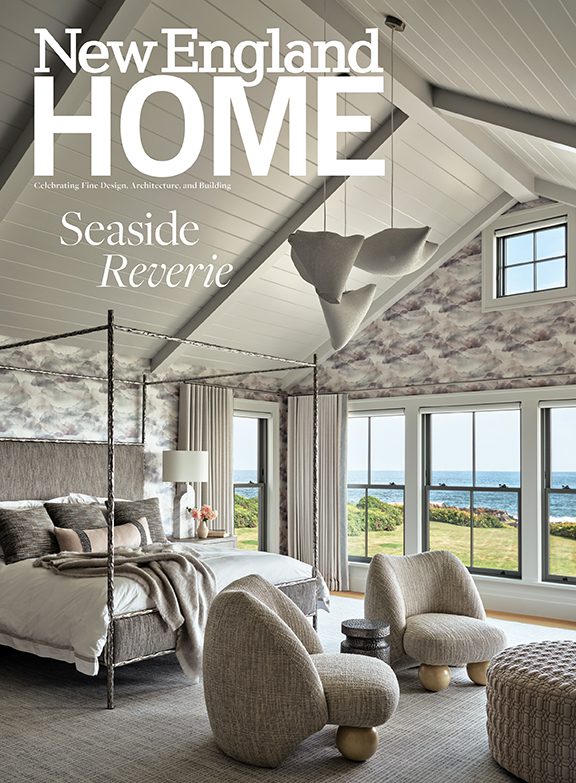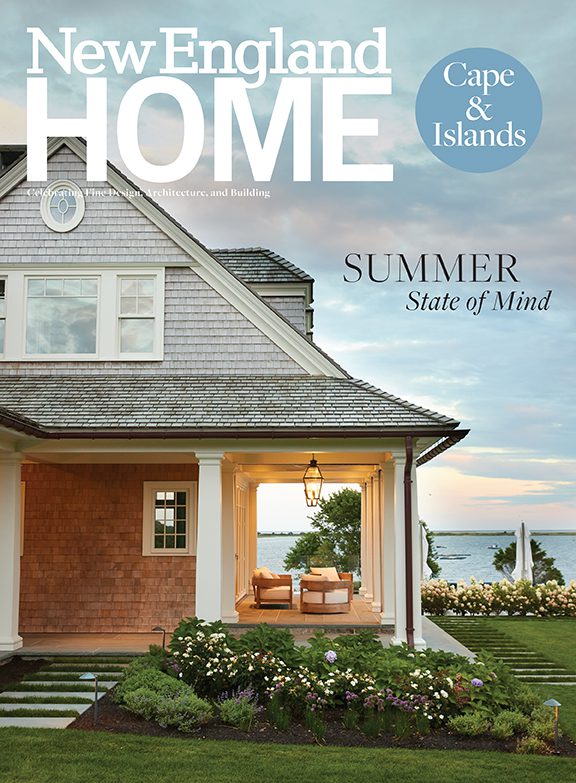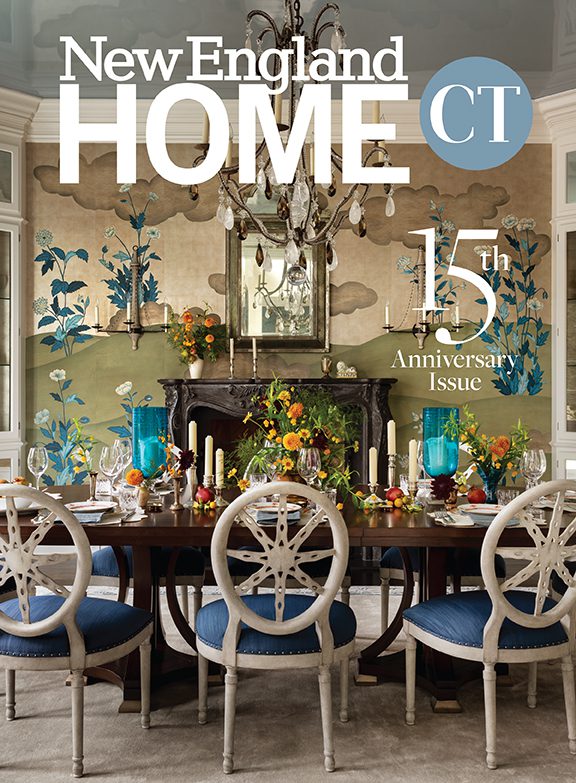Variety Show
January 18, 2012
Text by Nena Donovan Levine
Though he cut his teeth in the art world working with a noted abstract expressionist, don’t expect to find John Scofield violently hurling paint at a canvas. As studio assistant to Robert Motherwell in the mid-1970s, Scofield got a master class in painting, but the mild-mannered artist didn’t embrace the premise of that volatile movement—namely, that the intense emotions driving the creation of an artwork are also its subject matter. Even when it is not representational, “My work is more subject-specific,” he says.
It’s also just as likely to make use of wood, metal or concrete as it is paint and canvas. Over nearly four decades, commission by commission, the versatile Scofield has forged a body of work—from drawings and paintings to furniture and landscape structures—that defies easy stylistic characterization. No matter the medium, however, his art often touches on a central theme: the paradoxical idea that perimeters and limits create connections. For Scofield, edges and boundaries are beginnings, not endings.
Growing up in Stamford and Greenwich, Scofield had several mentors whose skills dovetailed with his artistic interests, including Charles Stuttig, a local locksmith who gave him a job, and architect Walter Kilham Jr., the father of a friend. Kilham owned a cherrywood music stand that made a lasting impression on the young Scofield. “I was mesmerized by that stand,” the artist says of the piece, which was designed by Wharton Esherick, considered by many the dean of American craftsmen. “It was the most elegant thing I had ever seen. The wood was handsome but the form was grace itself. It was not relying on the attractiveness of the wood to be interesting. Even I could tell that. And it made me wonder if I could make something like it.”
Several years later, while studying furniture design at the Rochester Institute of Technology, Scofield did just that, crafting a minimalist music stand and trading it for a silver belt buckle a friend had made. A praying mantis-like bundle of articulated sticks, Scofield’s work resembled a traditional music stand about as much as today’s sleek wind turbines resemble windmills in Dutch tulip fields. The design would go on to win a prestigious furniture design competition sponsored by Progressive Architecture magazine and eventually wind up in the Museum of Modern Art’s permanent design collection.
Scofield went on to great things, too. In the early 1970s, he served as apprentice to master furniture designer Wendell Castle through a grant from the Louis Comfort Tiffany Foundation. Later, he became Motherwell’s assistant, helping the painter with the massive work Reconciliation Elegy, which now hangs in the National Gallery. In the years since, Scofield has made his mark via dozens of solo and group shows, both in the United States and abroad.
Locally, you can catch a glimpse of his work at Kent Village Barns, the twelve-building shopping complex and wellness center just off Kent’s Main Street. (Scofield’s wife, Bartley Johnstone, has a clothing and home accessories store there.) As design coordinator for the Barns, Scofield camouflaged unsightly gas meters and air conditioning units with seating and exterior hardscape structures of his own creation; he describes them as transitional forms between the Barns and nature, at once connecting them but also defining their separate qualities. Two of the structures incorporate ribbon-like wave patterns, executed in wood, that seem to presage Scofield’s most recent work: his Band Width paintings.
More than merely visual, the small-scale color studies, measuring seven and a half inches by five and a half inches, reflect the artist’s deep interest in history. Like any good historian, Scofield is a storyteller, and tales of all kinds underlie the Band Width paintings. Some of the works bear the names of places he’s been (Ocracoke, Pamet River) and a few that he hasn’t. Some reference historical moments (Partition ’47, The Strange Case of I.G. Farben); others, literature (Pylon, a William Faulkner novel).
Their size notwithstanding, the paintings pack visceral punch. The hues and juxtapositions in Bosphorus Strait, for example, produce uncanny déjà vu, whether or not you’ve been to Istanbul. There is a compelling, even thrilling, inevitability to the mix and progression of the luminous color bands. In their own quiet, breathtakingly simple way, these small works manage to say plenty. •
Editor’s Note You can reach the artist at John Scofield Designs, Sharon, (860) 671-0153, www.johnscofield-designs.com.
Share
![NEH-Logo_Black[1] NEH-Logo_Black[1]](https://b2915716.smushcdn.com/2915716/wp-content/uploads/2022/08/NEH-Logo_Black1-300x162.jpg?lossy=1&strip=1&webp=1)














You must be logged in to post a comment.